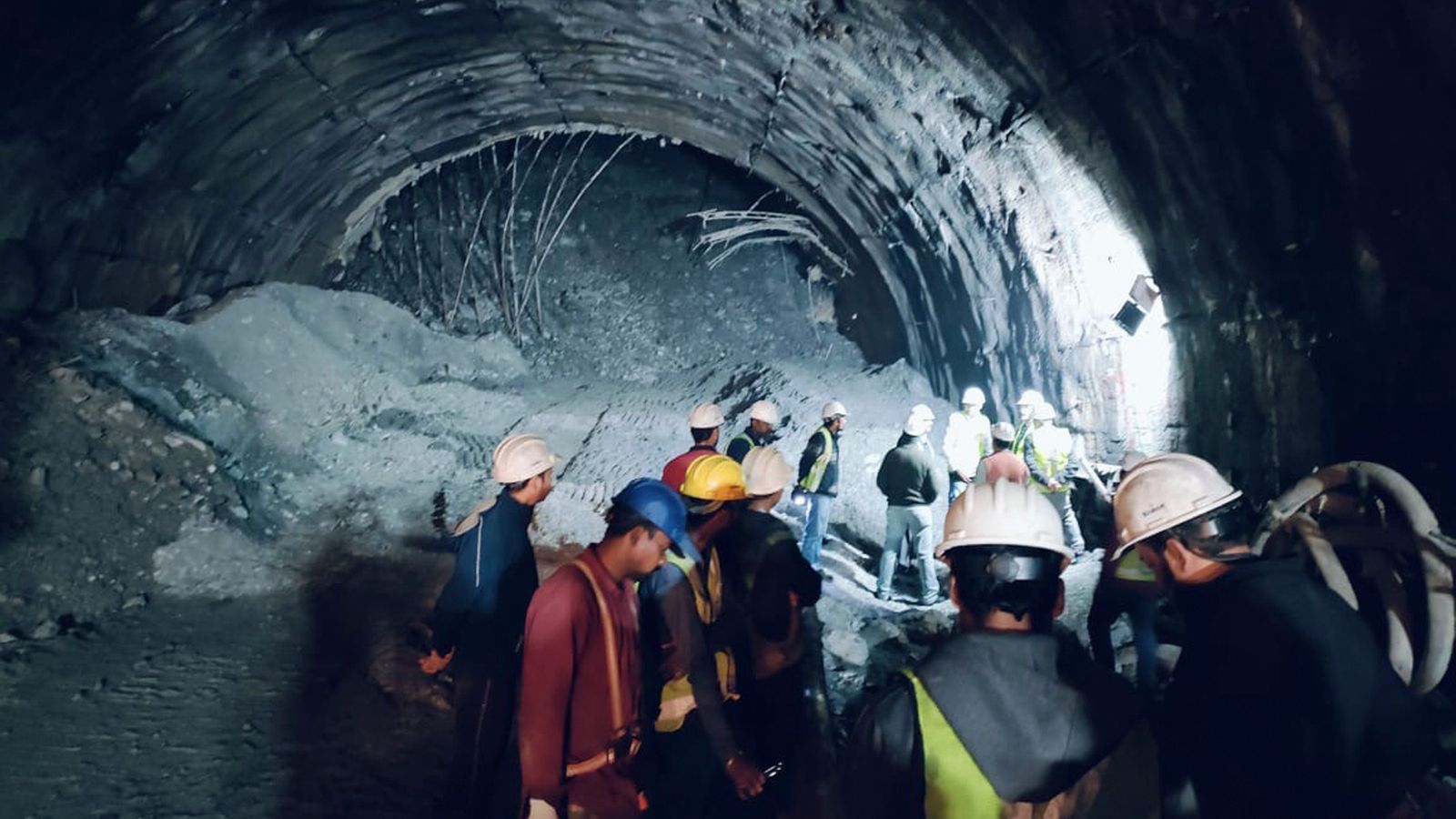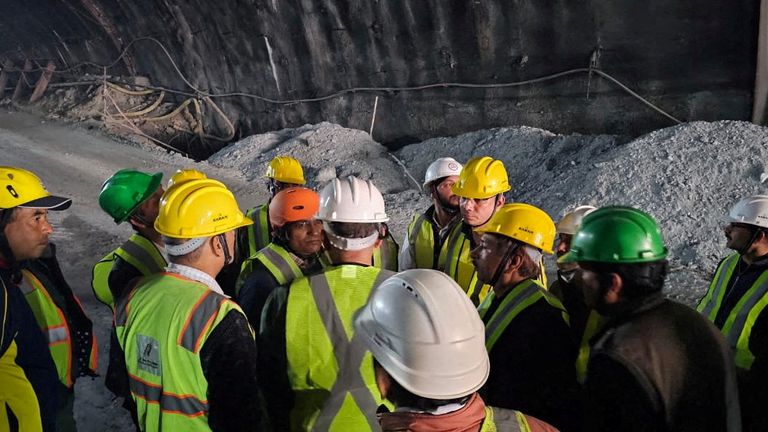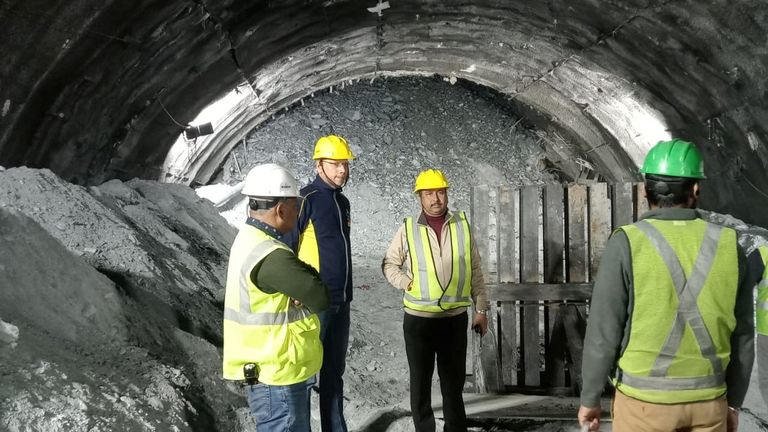A huge operation is under way to rescue 40 construction workers trapped inside a collapsed Himalayan road tunnel.
The three-mile tunnel was being built in the north Indian state of Uttarakhand when it caved in at around 5.30am on Sunday due to a landslide.
Rescuers have been working around the clock for two days to remove debris and carve out a path to reach those trapped.
A 2ft 6in wide (0.76m) steel pipe will be pushed through an opening of excavated debris with the aid of hydraulic jacks to safely pull out the stranded workers, authorities said.
Falling debris has been hindering the operation but they expect to free the workers by Tuesday night or Wednesday.
“We have been supplying food, water and oxygen to the trapped labourers and the officials are in continuous touch with all of them,” Devendra Singh Patwal, a disaster management official, said.
A team of geologists from the state government and educational institutions had arrived to determine the cause of the accident, he added.
There were around 50 to 60 workers inside the tunnel and around 10 to 20 got out after their shift ended as they were closer to the exit, while the rest were trapped after the collapse, the Indian Express newspaper reported.
“Initially, we thought it might be a minor collapse and began removing the debris however we could,” Rajeev Das, a worker who made it out safely, told the paper.
“But soon, we realised it was a challenging search and rescue (mission).”
Read more from Sky News:
India breaks world record with Diwali oil lamp display
Driving restrictions to come into force in New Delhi
The construction of the tunnel is part of a flagship federal government project connecting various Hindu pilgrimage sites.
The region, which is dotted with Hindu temples and sees a huge flow of pilgrims and tourists every year, is prone to landslides, earthquakes and floods.
It has expanded over the years with the massive construction of buildings and roads.
The tunnel collapse follows land subsidence events in the state that geologists, residents and officials have blamed on rapid construction in the mountains.




